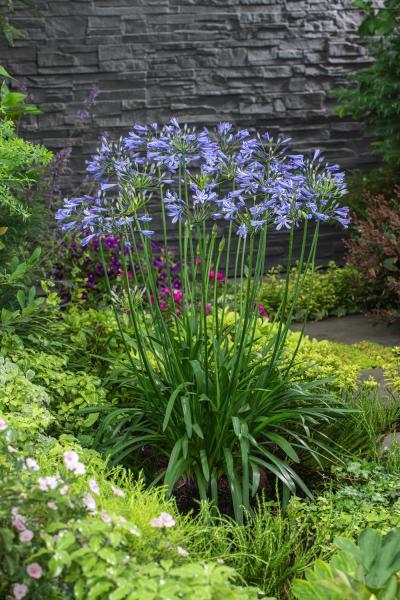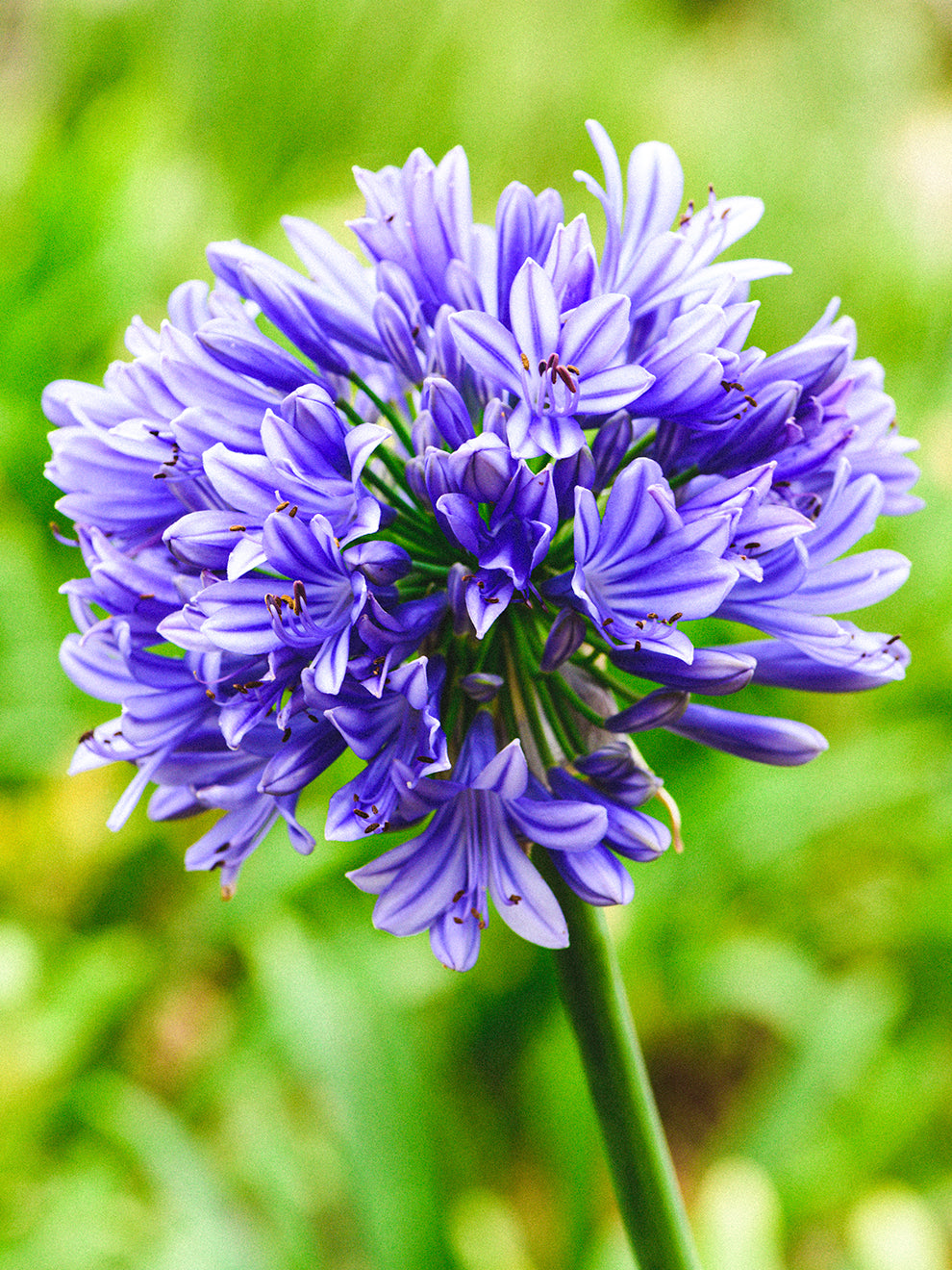Sensational Agapanthus: Enhancing Your Garden's Appeal
Sensational Agapanthus: Enhancing Your Garden's Appeal
Blog Article
Unleashing the Secret to Effective Agapanthus Cultivation: Idea for a Flourishing Yard
In the world of gardening, cultivating agapanthus efficiently needs a calculated technique that includes different facets of plant care. By understanding the subtleties of agapanthus farming, one can produce a setting where these plants prosper and bloom generously.
Planting Agapanthus: Best Practices
When planting Agapanthus, appropriate dirt prep work is vital for making sure successful growth and development of these beautiful flowers. Agapanthus, frequently known as Lily of the Nile or African lily, prospers in well-draining dirt with a somewhat acidic to neutral pH degree - Agapanthus. Prior to growing, it is vital to amend hefty clay soils with organic issue such as compost or peat moss to improve drainage and supply essential nutrients for the plants
To plant Agapanthus, choose a place that gets full sunlight to partial shade, as this will advertise healthy development and bountiful blooming. Dig an opening two times the diameter of the plant's origin ball and put the Agapanthus at the exact same deepness it was formerly expanding. Delicately backfill the opening with soil, pushing down firmly to remove any kind of air pockets around the origins.
Water the freshly grown Agapanthus extensively and remain to maintain the dirt uniformly damp, particularly during the plant's active growing season. Agapanthus. Applying a well balanced plant food once a month can better sustain the plant's growth and blooming. By adhering to these ideal practices for planting Agapanthus, you can develop a stunning display screen of these fascinating flowers in your garden
Suitable Soil Issues for Agapanthus
For optimum development and flowering success of Agapanthus plants, guaranteeing the soil conditions are excellent is critical. Agapanthus thrives in well-draining soil with a slightly acidic to neutral pH degree varying from 6.0 to 7.0. This type of dirt allows for adequate water drainage, stopping waterlogging which can cause root rot. To improve dirt drain, think about adding natural issue such as garden compost or peat moss when preparing the growing site. Furthermore, Agapanthus favors soil that is rich in nutrients, so incorporating a balanced plant food during the expanding season can advertise healthy and balanced growth and vivid blooms.

Watering and Feeding Tips
To ensure healthy growth and vibrant blossoms, appropriate watering and feeding techniques are crucial for effective Agapanthus growing. Agapanthus plants benefit from regular watering, specifically during the growing period.
When it concerns fertilizing Agapanthus, a balanced plant food with equal components nitrogen, phosphorus, and potassium can be used in the spring to advertise healthy and balanced growth and blooming. Slow-release plant foods are optimal for providing nutrients progressively over a prolonged duration. Prevent over-fertilizing, as this can lead to too much foliage development at the expense of blossoms.
Furthermore, integrating organic issue like compost right into the soil can boost nutrient levels and boost soil framework, helping in the total health and wellness of the Agapanthus plants. By adhering to these watering and fertilizing tips, garden enthusiasts can guarantee their Agapanthus plants flourish and generate spectacular screens of blossoms.
Trimming and Deadheading Methods
Correct pruning and deadheading methods play an essential function in maintaining the health and wellness and aesthetics of Agapanthus plants, matching the important methods of watering and fertilizing for effective cultivation. Pruning Agapanthus includes getting rid of spent flower heads, dead or yellowing leaves, and general shaping of the plant to advertise far better growth. Deadheading, the process of getting rid of faded flowers, not only boosts the plant's appearance however additionally urges more blooming.
When deadheading Agapanthus, it is a good idea to trim off the blossom stem at the base using sharp, clean shears. This process reroutes the plant's power from seed manufacturing back right into root and foliage growth, promoting a Web Site healthier and a lot more durable plant. Normal deadheading can expand the growing duration of Agapanthus and avoid self-seeding, which can cause congestion.
In regards to trimming, Agapanthus typically take advantage of a light trim after flowering to clean up the plant and urge fresh growth. Cutting back the spent blossom stems and eliminating any type of damaged or dead foliage helps maintain the plant's vigor and overall look. Nevertheless, it is important to stay clear of reducing right into the crown of the plant, as this can deteriorate its health and wellness.

Protecting Agapanthus From Vermins and Diseases
Implementing effective insect and condition administration approaches is critical to safeguarding the wellness and vigor of Agapanthus plants in cultivation. One read this common bug that impacts Agapanthus is the Agapanthus borer, a caterpillar that tunnels into the plant, creating damage to the flowers and fallen leaves.
In enhancement to parasites, Agapanthus are prone to conditions such as origin rot and fungal leaf areas. By remaining cautious and resolving pest and disease issues without delay, garden enthusiasts can aid their Agapanthus grow and flourish.

Verdict
To conclude, effective cultivation of agapanthus needs correct planting methods, excellent dirt conditions, appropriate watering and fertilizing, routine trimming and deadheading, and protection from illness and parasites. By complying with these methods and recommended you read suggestions, garden enthusiasts can ensure a growing yard loaded with stunning agapanthus blossoms. Agapanthus. Bear in mind to maintain constant treatment and focus to detail to promote the health and wellness and long life of these magnificent plants
When planting Agapanthus, appropriate soil preparation is necessary for making certain effective development and development of these lovely blossoms.Water the newly planted Agapanthus extensively and continue to keep the soil uniformly damp, particularly throughout the plant's energetic expanding period.For optimum growth and flowering success of Agapanthus plants, guaranteeing the dirt problems are suitable is critical. When transplanting or planting Agapanthus, guarantee the dirt is well-prepared to supply the essential structure for the plants to develop themselves efficiently. One usual insect that impacts Agapanthus is the Agapanthus borer, a caterpillar that tunnels into the plant, triggering damage to the leaves and flowers.
Report this page